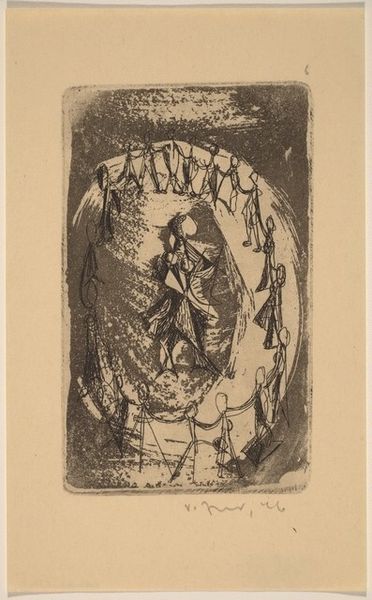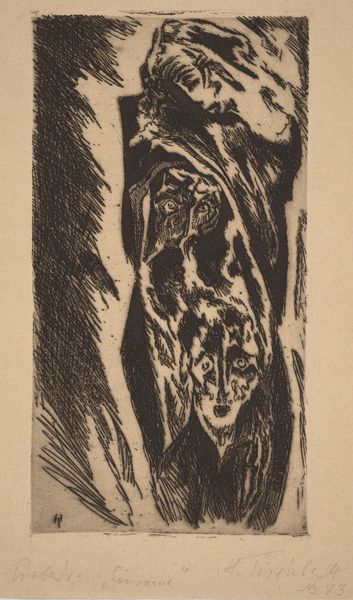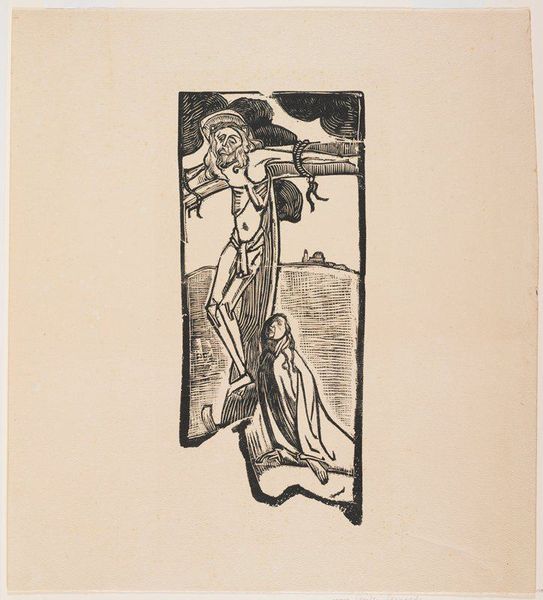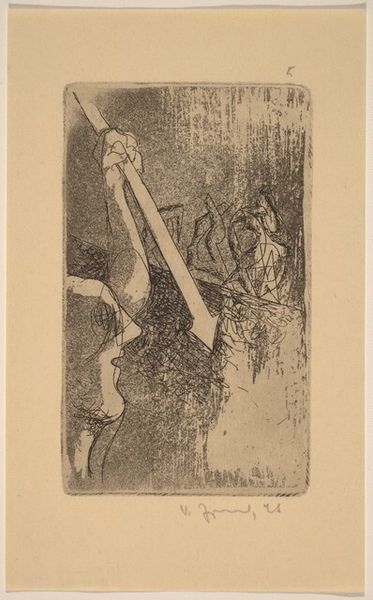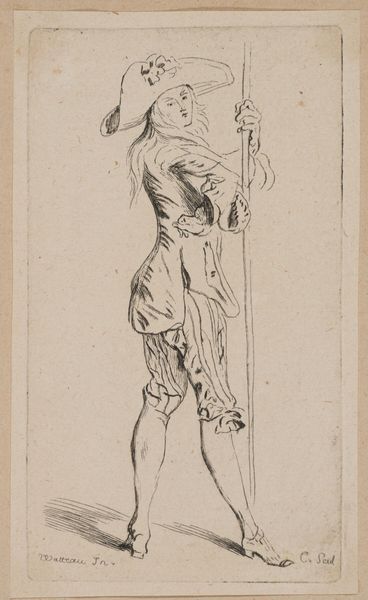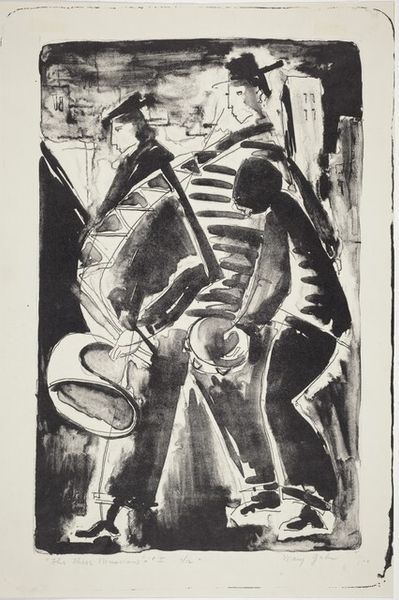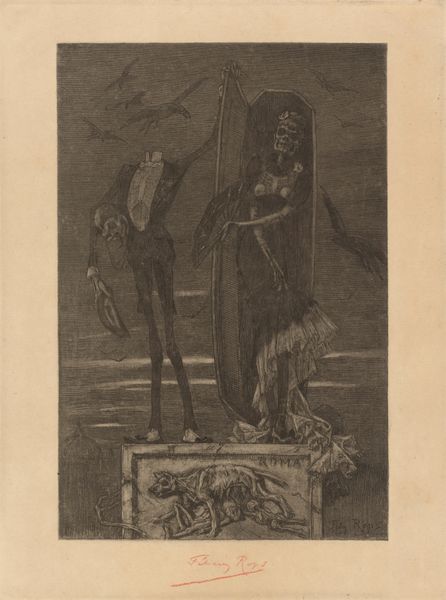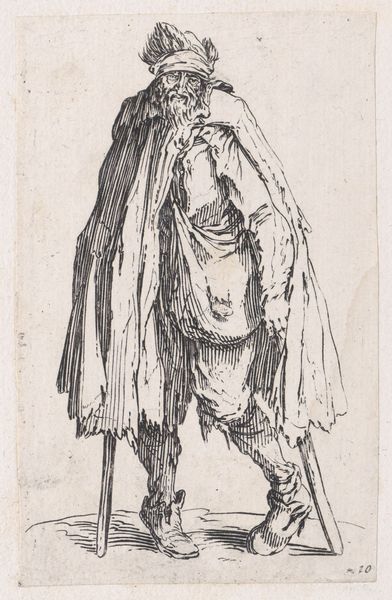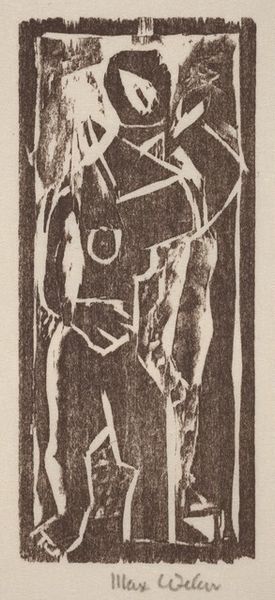
drawing, print, ink
#
portrait
#
drawing
#
ink drawing
# print
#
figuration
#
ink
Copyright: National Gallery of Art: CC0 1.0
Imre Reiner created this print of David, a woodcut, in 1942. Woodcut is a relief printing process. The artist carves away areas of a woodblock, leaving the design raised. Ink is then applied to the surface and transferred to paper. Look closely and you can see the marks of the cutting tools, which give the print its distinctive, graphic quality. Reiner’s expressive cuts evoke the figure of David and his surroundings. The process has a long history, originating in China, and arriving in Europe in the 14th century, where it was often used for devotional images. It was easily reproducible, so woodcut, in the context of its time, made art accessible to a wider audience. However, the technique demands skill, and the artist’s hand is always evident in the final print. In “David,” the process becomes part of the image’s power, speaking to the relationship between labor, skill, and the dissemination of art. It reminds us that understanding the materials and making is vital to understanding the full story.
Comments
No comments
Be the first to comment and join the conversation on the ultimate creative platform.
